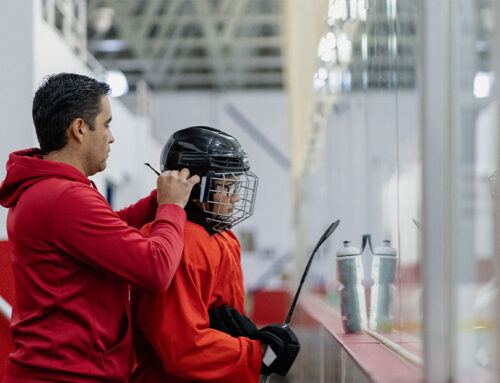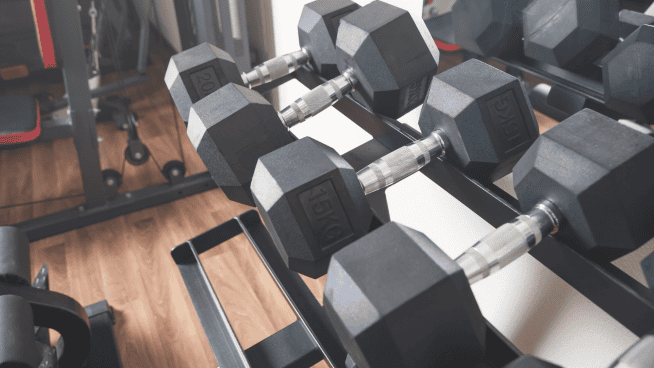How to Improve Quickness
You’ve probably heard your coach yell, “You have to be faster!” Speed is important, but in a typical game, the players reach top speed in only a few instances. Thus, your focus should be on quickness, which is explosively accelerating to a high speed over a short distance.
To train to be quick, you need to understand how muscles work. Essentially, they are comprised of slow-twitch and fast-twitch fibers. Slow-twitch fibers specialize in endurance, allowing athletes such as Lance Armstrong to bike hundreds of miles. Fast-twitch fibers specialize in quick movements, like those of a sprinter. They produce powerful, high-speed contractions, but they fatigue easily, because they rely on anaerobic metabolism, which uses stored glucose to power muscle contractions instantly. This energy source depletes quickly, producing lactic acid, which causes the burning sensation that all serious athletes experience.
Training programs that target fast-twitch fibers must consider their function, and how and when quickness is needed during competition. Not only can you strengthen the fibers and increase contraction speed and endurance, you may also be able to raise the proportion of fast-twitch fibers in your muscles. A recent study produced evidence of conversion from slow- to fast-twitch fibers resulting from high-intensity exercise.*
The combination of strength and quickness provided by fast-twitch fibers is what makes athletes such as Dwight Freeney and Thomas Vanek so intimidating. Freeney uses exercises like the Rip and Press and the Machine Hang Shrug to train his explosiveness, which puts fear in the eyes of opposing quarterbacks.
Vanek’s quickness makes him a constant threat on the ice. Cal Dietz, University of Minnesota hockey strength and conditioning coach, has Vanek perform exercises that strengthen his muscles to be explosive—like the Power Step-Up and the 180 Reverse Bench Jump. You can perform these and other exercises (see below) to strengthen your fast-twitch fibers and train them to fire quickly.
Additional Exercises
Tendo Back Squat
Front Squat
Box Toe Touches
Resisted Starts
Dumbbell Squat Press
*Jansson, E., et al. (2008). Increase in the proportion of fast-twitch muscle fibers by sprint training in males. Acta Physiologica Scandinavica, 359-363.
RECOMMENDED FOR YOU
MOST POPULAR
How to Improve Quickness
You’ve probably heard your coach yell, “You have to be faster!” Speed is important, but in a typical game, the players reach top speed in only a few instances. Thus, your focus should be on quickness, which is explosively accelerating to a high speed over a short distance.
To train to be quick, you need to understand how muscles work. Essentially, they are comprised of slow-twitch and fast-twitch fibers. Slow-twitch fibers specialize in endurance, allowing athletes such as Lance Armstrong to bike hundreds of miles. Fast-twitch fibers specialize in quick movements, like those of a sprinter. They produce powerful, high-speed contractions, but they fatigue easily, because they rely on anaerobic metabolism, which uses stored glucose to power muscle contractions instantly. This energy source depletes quickly, producing lactic acid, which causes the burning sensation that all serious athletes experience.
Training programs that target fast-twitch fibers must consider their function, and how and when quickness is needed during competition. Not only can you strengthen the fibers and increase contraction speed and endurance, you may also be able to raise the proportion of fast-twitch fibers in your muscles. A recent study produced evidence of conversion from slow- to fast-twitch fibers resulting from high-intensity exercise.*
The combination of strength and quickness provided by fast-twitch fibers is what makes athletes such as Dwight Freeney and Thomas Vanek so intimidating. Freeney uses exercises like the Rip and Press and the Machine Hang Shrug to train his explosiveness, which puts fear in the eyes of opposing quarterbacks.
Vanek’s quickness makes him a constant threat on the ice. Cal Dietz, University of Minnesota hockey strength and conditioning coach, has Vanek perform exercises that strengthen his muscles to be explosive—like the Power Step-Up and the 180 Reverse Bench Jump. You can perform these and other exercises (see below) to strengthen your fast-twitch fibers and train them to fire quickly.
Additional Exercises
Tendo Back Squat
Front Squat
Box Toe Touches
Resisted Starts
Dumbbell Squat Press
*Jansson, E., et al. (2008). Increase in the proportion of fast-twitch muscle fibers by sprint training in males. Acta Physiologica Scandinavica, 359-363.












